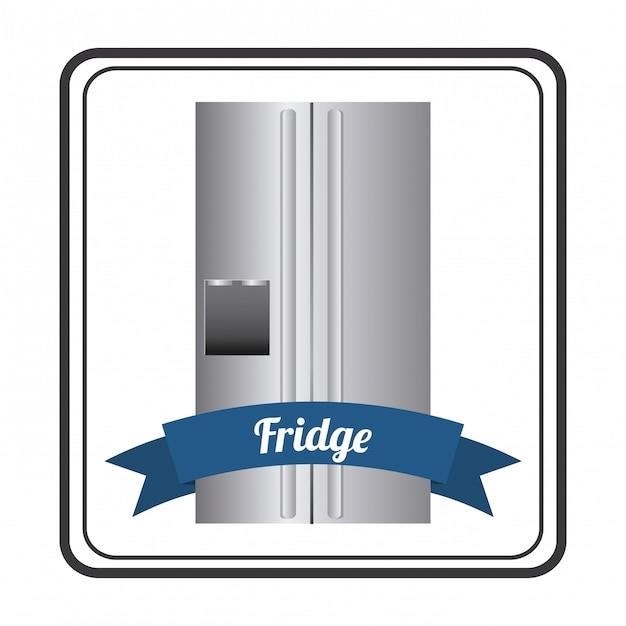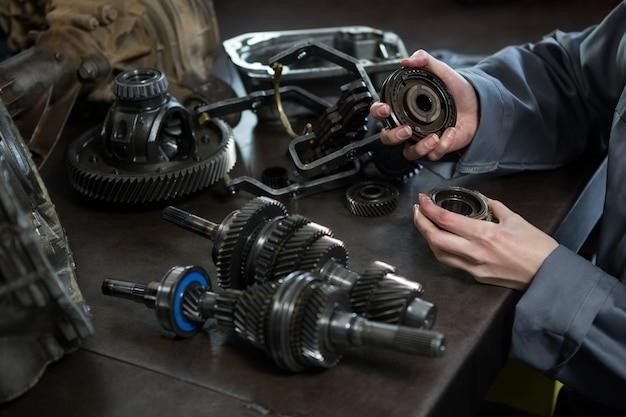Minolta X-370⁚ A Comprehensive Guide
This comprehensive guide will delve into the intricacies of the Minolta X-370‚ a renowned 35mm film camera that captured the hearts of photographers in its era․ From its key features and technical specifications to practical usage tips‚ this guide will equip you with the knowledge to fully appreciate and utilize this classic camera․
Introduction
The Minolta X-370‚ a product of the 1980s‚ stands as a testament to Minolta’s commitment to producing user-friendly yet sophisticated single-lens reflex (SLR) cameras․ This camera‚ designed for both beginners and seasoned photographers‚ embodies a balance of simplicity and functionality‚ offering a smooth learning curve while catering to creative aspirations․ Its microcomputerized design‚ coupled with quartz control of mechanical sequences and shutter speed‚ ensures precision and accuracy in every shot․ This guide aims to illuminate the X-370’s capabilities‚ providing insights into its key features‚ operation‚ and historical significance․ It serves as a comprehensive resource for anyone seeking to understand and master this classic camera․
Key Features of the Minolta X-370
The Minolta X-370 boasts a compelling array of features that make it a versatile and capable camera․ Its aperture-priority auto-exposure mode simplifies photography by automatically adjusting the shutter speed for optimal exposure based on the selected aperture․ This feature allows photographers to focus on composition and subject matter while the camera handles the technical aspects of exposure․ For those seeking greater creative control‚ the X-370 offers a match-LED/full-metered manual mode․ In this mode‚ the photographer can manually set both aperture and shutter speed‚ aligning blinking and glowing LEDs in the viewfinder to achieve the desired exposure․ This manual mode empowers photographers to experiment with different settings and achieve unique results․ The X-370 also incorporates a self-timer with a triple-rate blinking LED‚ providing a convenient way to capture self-portraits or group shots․
Aperture-Priority Auto-Exposure Mode
The Minolta X-370’s aperture-priority auto-exposure mode simplifies photography by taking the guesswork out of exposure settings․ This mode allows photographers to select the desired aperture‚ which controls the depth of field (the area of the image that is in focus)‚ and the camera automatically determines the appropriate shutter speed for proper exposure․ This eliminates the need for manual calculations and allows photographers to concentrate on composition and subject matter․ The aperture-priority mode is particularly useful in situations where depth of field is crucial‚ such as portrait photography‚ where a shallow depth of field can isolate the subject from the background‚ or landscape photography‚ where a wider depth of field ensures that both the foreground and background are in focus․ The X-370’s aperture-priority mode provides a balance of creative control and ease of use‚ making it an ideal choice for photographers of all skill levels․
Manual Mode for Creative Control
For photographers who desire complete control over their exposures‚ the Minolta X-370 offers a full-fledged manual mode․ This mode allows photographers to independently set both the aperture and shutter speed‚ enabling them to fine-tune exposure settings to achieve specific creative effects․ For example‚ photographers can choose a slow shutter speed to capture motion blur in a moving subject or a fast shutter speed to freeze action․ Similarly‚ they can adjust the aperture to control depth of field‚ creating a shallow depth of field for a blurred background or a wider depth of field for sharp focus throughout the image․ This manual mode grants photographers the freedom to experiment with different exposure combinations and explore their creative vision․ The X-370’s manual mode is a powerful tool for experienced photographers who seek the ultimate control over their images‚ allowing them to push the boundaries of their creativity and achieve unique and expressive results․
Camera Specifications
The Minolta X-370 boasts a range of specifications that contributed to its popularity during its time․ It features a 35mm film format‚ capable of capturing high-quality images on standard 35mm film rolls․ Its shutter speed range extends from 1/1000th of a second to 8 seconds‚ providing flexibility in various lighting conditions․ The aperture range‚ governed by the attached lens‚ allows for precise control over depth of field․ The X-370 incorporates a built-in light meter‚ crucial for accurate exposure readings‚ and it features a self-timer for capturing images without the need for a physical trigger․ The camera’s compact and lightweight design makes it easy to carry and handle‚ while its robust construction ensures durability․ The Minolta X-370’s combination of features and specifications made it a versatile and reliable camera for a wide range of photographic applications․
Using the Minolta X-370
Operating the Minolta X-370 is a straightforward process‚ thanks to its user-friendly design․ First‚ load a roll of 35mm film into the camera’s film chamber‚ ensuring the film leader is correctly positioned․ Wind the film to the first frame and set the film speed dial to match the ISO rating of the film you’re using․ The X-370 offers a choice of aperture-priority auto-exposure or manual exposure modes․ In aperture-priority mode‚ you select the aperture‚ and the camera automatically sets the shutter speed for correct exposure․ In manual mode‚ you have complete control over both aperture and shutter speed․ To take a picture‚ focus using the viewfinder and press the shutter release button․ The camera’s built-in light meter will guide you to achieve the optimal exposure settings․ The X-370 also features a self-timer‚ allowing for hands-free photography․ After you’ve taken your pictures‚ rewind the film and remove it from the camera․ You can then develop the film and enjoy your captured memories․
Attaching and Removing Lenses

The Minolta X-370 is compatible with a range of Minolta MD and MC lenses‚ offering flexibility in your photographic endeavors․ To attach a lens‚ align the lens mount with the camera’s lens mount and rotate the lens clockwise until it clicks into place․ A secure connection is essential for optimal image quality․ To remove a lens‚ press the lens release button on the camera body while rotating the lens counterclockwise․ The lens should detach smoothly․ Always handle lenses with care to avoid damage to the delicate optics and ensure a long-lasting photographic experience․ Remember to keep the lens mount clean and free of dust and debris for optimal performance․
Exposure Settings
The Minolta X-370 offers both aperture-priority automatic and manual exposure settings‚ allowing you to tailor your photographs to your creative vision․ In aperture-priority mode‚ simply select your desired aperture‚ and the camera intelligently determines the appropriate shutter speed for correct exposure․ This mode is ideal for controlling depth of field‚ with wider apertures creating a shallow depth of field and narrower apertures yielding greater depth․ For complete creative control‚ switch to the manual mode․ By manually adjusting both aperture and shutter speed‚ you can fine-tune the exposure to your liking․ The viewfinder displays LEDs that indicate the exposure level‚ allowing you to precisely adjust the settings for a perfectly exposed photograph․
Focusing
The Minolta X-370 employs a traditional manual focusing system‚ providing photographers with a tactile and precise approach to achieving sharp images․ Using the focusing ring on the lens‚ you can manually adjust the focus distance‚ bringing your subject into clear view․ The viewfinder incorporates a split-image rangefinder‚ which provides a visual aid for achieving accurate focus․ This system displays two images of your subject‚ which align when you achieve focus․ The X-370 also features a microprism focusing screen‚ which offers a more subtle focus aid․ As you adjust the focus ring‚ a series of microprisms surrounding the center of the viewfinder will shift‚ indicating when focus is achieved․ While manual focusing requires a bit more attention and practice‚ it offers a level of control and precision that can be highly rewarding for those who appreciate the art of fine-tuning their images․
Shutter Speed
The Minolta X-370 offers a range of shutter speeds to suit a variety of photographic situations․ The camera’s shutter speeds are controlled by a combination of mechanical and electronic components‚ ensuring precise timing and reliable operation․ In aperture-priority mode‚ the camera automatically sets the shutter speed based on the selected aperture and the prevailing light conditions․ This allows you to concentrate on choosing the right aperture for your composition‚ while the camera ensures proper exposure․ In manual mode‚ you have complete control over both aperture and shutter speed‚ giving you creative freedom to experiment with different exposure combinations․ The shutter speed range typically extends from 1/1000 second to 8 seconds‚ allowing you to capture fast action‚ freeze motion‚ or create deliberate blur for artistic effects; The X-370 also features a bulb setting‚ which allows for extended exposures of up to 30 seconds‚ ideal for capturing light trails‚ star trails‚ and other low-light scenarios․
Self-Timer
The Minolta X-370 is equipped with a self-timer‚ a handy feature that allows you to take pictures without physically pressing the shutter release button․ This is useful for situations where you need to be in the frame‚ such as group photos or self-portraits․ To activate the self-timer‚ simply switch it on using the dedicated control on the camera body․ The X-370’s self-timer has a triple-rate blinking LED‚ providing visual confirmation that it is active and counting down․ The self-timer offers multiple delay settings‚ allowing you to choose the amount of time before the shutter is released․ This gives you flexibility to position yourself‚ adjust your composition‚ or simply wait for the perfect moment․ The self-timer is also a great tool for reducing camera shake when shooting in low-light conditions‚ as it allows the camera to remain completely still during the exposure․ Whether you’re capturing a family gathering or experimenting with long exposures‚ the Minolta X-370’s self-timer is a valuable tool for creative photography․
Battery Information
The Minolta X-370 relies on a single battery to power its internal functions‚ ensuring the camera operates smoothly and accurately․ The camera accepts various types of batteries‚ offering flexibility and convenience․ The most common options include 4LR44 (alkaline) and 4SR44 (silver oxide) batteries‚ which are readily available at most electronics retailers․ It’s essential to use batteries that are specifically designed for camera applications‚ as they provide the necessary voltage and current for optimal performance․ When inserting the battery‚ ensure it is correctly aligned with the positive and negative terminals within the battery compartment․ To maintain optimal battery life‚ avoid leaving the battery in the camera when it’s not in use‚ especially during prolonged storage periods․ Regularly checking the battery level and replacing it when needed will help prevent unexpected power outages during your photography adventures․

Flash Compatibility
The Minolta X-370 is compatible with a range of external flash units‚ allowing you to expand your photographic capabilities and conquer low-light situations․ The camera’s built-in hot shoe provides a secure connection for compatible flash units‚ ensuring reliable communication between the camera and the flash․ For optimal results‚ it’s recommended to use Minolta X-series Auto Electroflash units‚ specifically designed for seamless integration with the Minolta X-370․ These flash units offer automatic exposure control‚ ensuring balanced lighting and properly exposed images․ When using a flash‚ it’s essential to refer to the flash unit’s instructions for specific usage guidelines and compatibility information․ By understanding the flash compatibility of the Minolta X-370‚ you can unlock a world of creative possibilities and capture stunning images even in challenging lighting conditions․
Where to Find a Manual
Acquiring a user manual for the Minolta X-370 is crucial for understanding its features and operation․ Several resources can provide you with the necessary information․ Online platforms like eBay and Amazon offer original Minolta X-370 owner’s manuals for purchase‚ ensuring authenticity and comprehensive instructions․ Furthermore‚ dedicated camera manual websites‚ such as Butkus․org and Cameramanuals․org‚ host a vast library of camera manuals‚ including the Minolta X-370‚ often available for free download․ These websites serve as valuable resources for vintage camera enthusiasts seeking to understand and utilize their equipment effectively․ Additionally‚ online communities and forums dedicated to photography and vintage cameras can offer guidance and assistance in locating a manual for the Minolta X-370․ By exploring these resources‚ you can obtain the necessary documentation to unlock the full potential of this classic camera․
Historical Significance
The Minolta X-370 holds a significant place in the history of photography‚ marking a period of transition in the industry․ Launched in 1984‚ it emerged during a time when the demand for autofocus cameras was growing‚ yet manual focus cameras still held their appeal․ The X-370 represented a bridge between these two eras‚ offering a user-friendly and reliable experience for photographers who favored the control and precision of manual focus․ Its quartz-controlled mechanical sequences and shutter speed ensured accuracy and consistency‚ while its aperture-priority auto-exposure mode simplified exposure control․ The X-370’s design and features solidified Minolta’s reputation as a leader in the camera industry‚ contributing to their legacy of innovation and craftsmanship․ Its historical significance lies in its ability to cater to both seasoned photographers and those seeking a reliable and accessible entry point into the world of 35mm film photography․
The Minolta X-370 stands as a testament to the enduring appeal of classic film cameras․ Its ease of use‚ combined with the creative control offered by manual focus and exposure settings‚ makes it an excellent choice for both beginners and seasoned photographers․ While the world has moved towards digital photography‚ the X-370 continues to inspire photographers with its ability to capture timeless images․ Whether you’re a seasoned film enthusiast or a curious newcomer‚ the Minolta X-370 offers a unique opportunity to experience the art of photography in its purest form․ Its historical significance‚ combined with its enduring practicality‚ ensures that the X-370 will remain a cherished camera for generations to come․


















